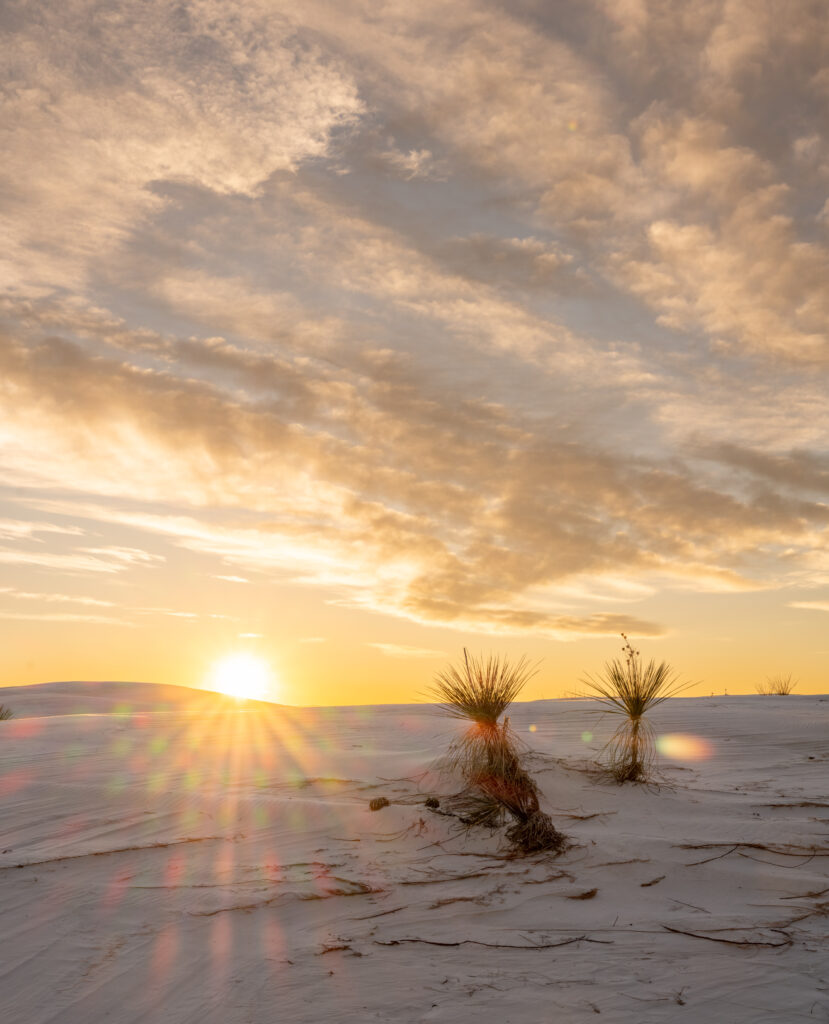New Mexico | 2023

White Sands National Park is a United States national park located in the state of New Mexico. It was previously designated as a national monument in 1933, but was later elevated to national park status in December 2019. The park covers an area of approximately 275 square miles, and is famous for its unique landscape of sparkling white sand dunes.
The formation of the white sand dunes in the park is a fascinating geological process that began over 10,000 years ago. The area was once covered by a large lake, Lake Otero, that slowly began to dry up due to changes in the climate. As the lake dried up, it left behind large gypsum deposits that were eventually eroded into small crystals by wind and water.
Over time, these gypsum crystals were transported by wind and formed large sand dunes that now cover much of the park. The unique white color of the sand is due to the fact that gypsum is a translucent mineral that reflects sunlight, giving the sand its bright and beautiful appearance
The park is home to a variety of flora and fauna, many of which have adapted to the harsh desert environment. Sadly, we never had the opportunity to see any of them. You may encounter animals such as the white-tailed antelope squirrel, kangaroo rat, and horned lizard, as well as several species of birds, including roadrunners and burrowing owls. In addition, the park is home to several species of plants that are found nowhere else in the world, including the gypsum wild buckwheat and the white sand verbena.
In addition, the park is home to several species of plants that are found nowhere else in the world, including the gypsum wild buckwheat and the white sand verbena.
The park also offers several ranger-led programs and events throughout the year. These programs include guided hikes, astronomy programs, and talks about the park’s history and geology. Visitors can check the park’s website or stop by the visitor center for more information about these programs.

Something To Consider

Unless you’re fortunate enough to be camping, the park hours are approximately sunrise to sunset. This sounds good but it means you wont be in the park for the magic of sunrise; and you will have to hustle hard to be out by the appropriate time at sunset if you stay to shoot the colors. However, it doesn’t appear that there is an actual locked gate preventing you from leaving slightly after sunset. So while we don’t encourage you to push the rules, it might be ok if you need to. We tried to get out as soon as we could after shooting sunset. This meant a vigorous hike from a few KM out in the desert back to the car in the dimming light. Bring a headlamp, and water.



This was such an amazing place we spent part of two days there. Very unique, and highly recommended to check out.

Overall, White Sands National Park is a unique and beautiful destination that offers visitors a chance to experience a one-of-a-kind landscape. From hiking and camping to sand sledding and stargazing, there are plenty of activities to keep visitors of all ages entertained. If you’re planning a trip to New Mexico, be sure to add White Sands National Park to your itinerary. All shots from the Fujifilm GFX100 and the GF20-35mm, GF 32-64mm, and GF 110mm


